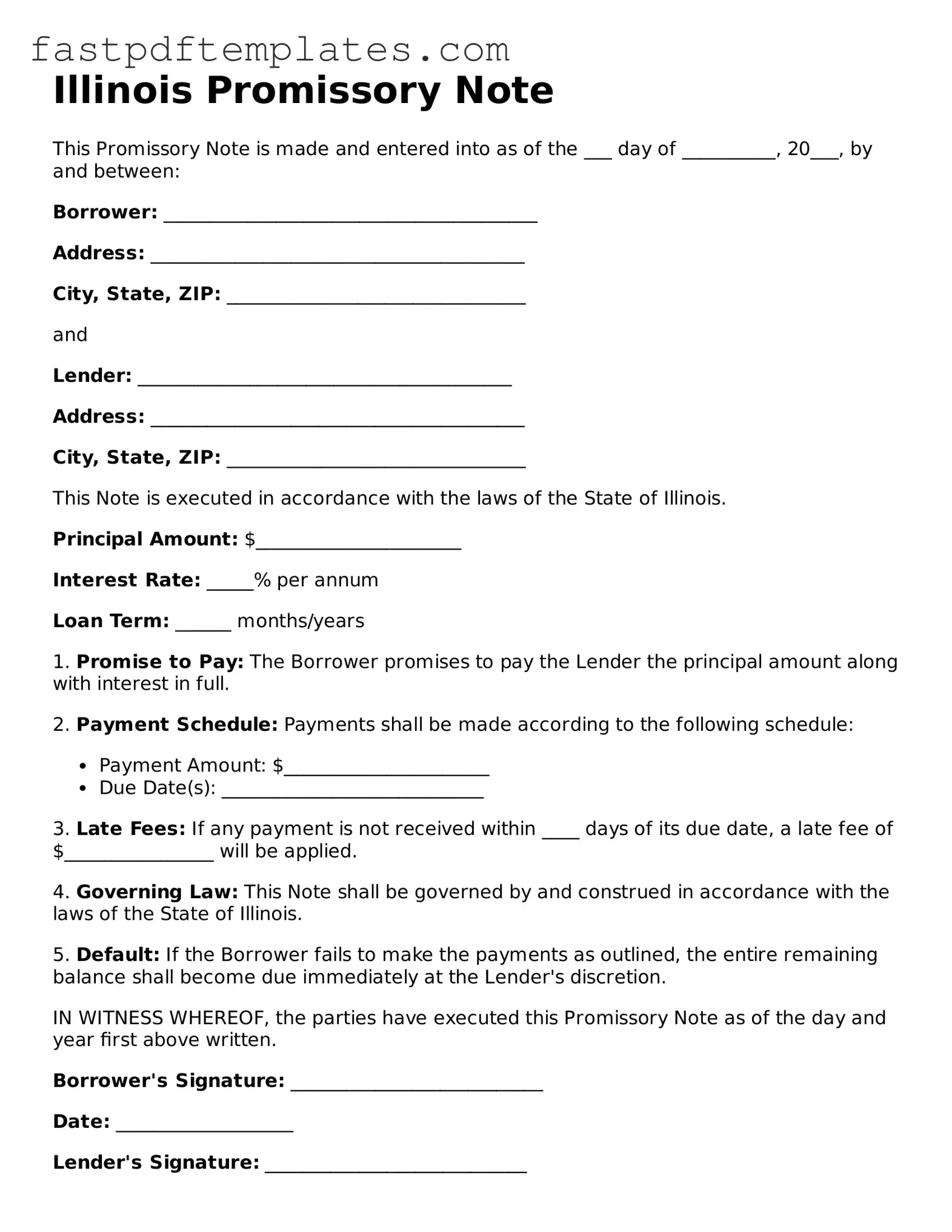Illinois Promissory Note
This Promissory Note is made and entered into as of the ___ day of __________, 20___, by and between:
Borrower: ________________________________________
Address: ________________________________________
City, State, ZIP: ________________________________
and
Lender: ________________________________________
Address: ________________________________________
City, State, ZIP: ________________________________
This Note is executed in accordance with the laws of the State of Illinois.
Principal Amount: $______________________
Interest Rate: _____% per annum
Loan Term: ______ months/years
1. Promise to Pay: The Borrower promises to pay the Lender the principal amount along with interest in full.
2. Payment Schedule: Payments shall be made according to the following schedule:
- Payment Amount: $______________________
- Due Date(s): ____________________________
3. Late Fees: If any payment is not received within ____ days of its due date, a late fee of $________________ will be applied.
4. Governing Law: This Note shall be governed by and construed in accordance with the laws of the State of Illinois.
5. Default: If the Borrower fails to make the payments as outlined, the entire remaining balance shall become due immediately at the Lender's discretion.
IN WITNESS WHEREOF, the parties have executed this Promissory Note as of the day and year first above written.
Borrower's Signature: ___________________________
Date: ___________________
Lender's Signature: ____________________________
Date: ___________________
